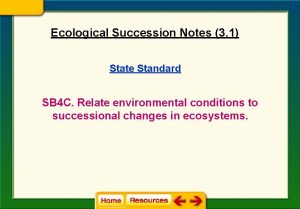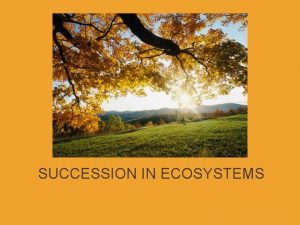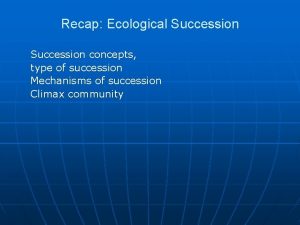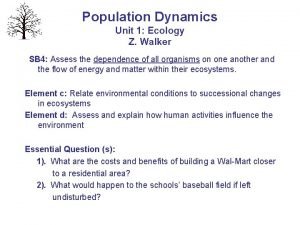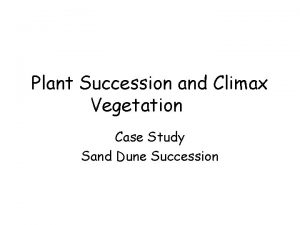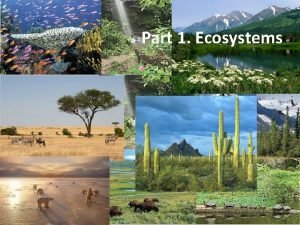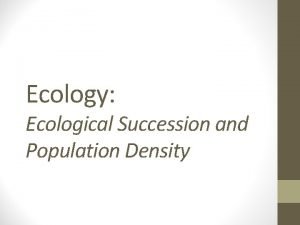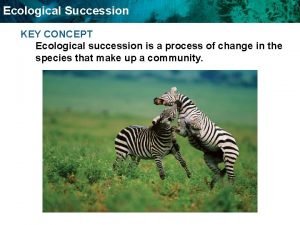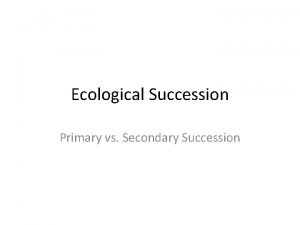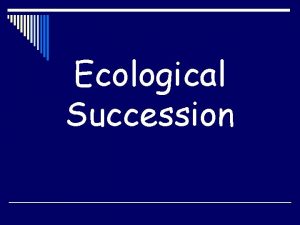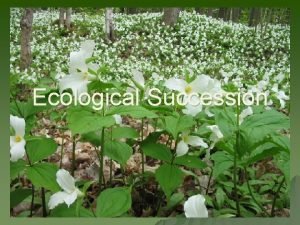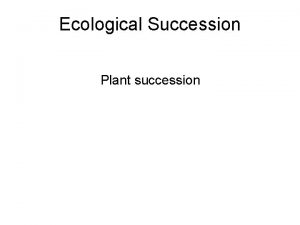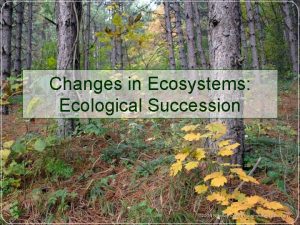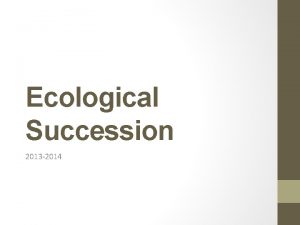Chapter 3 Section 1 Ecological Succession Ecological Succession









- Slides: 9

Chapter 3 Section 1 Ecological Succession

Ecological Succession… Is the change in an ecosystem when one community replaces another as a result of changing abiotic and biotic factors. There are 2 types of ecological succession: Primary succession Secondary succession

Primary Succession

Primary Succession An example of Primary Succession Solidified Lava Flow – an area of exposed rock. No Topsoil is present. Only living organisms Bacteria Fungal spores Pollen grains Primary Succession occurs very slowly at first.

Primary Succession - Process Plants need soil!!! So how do we get soil, where there isn’t any? 1. 2. 3. Pioneer species like lichens (fungus/algae) and mosses, are the first to start growing on rock. Pioneer species secrete acids that help to break down rock, thus producing topsoil. As pioneer species die and their organic matter decomposes, more soil is added to the area

Primary Succession - Process 4. 5. Once soil is established – small plants, fungi, and insects establish their own populations Seeds can start to grow in the developing soil, thus creating mature shrubs and trees. Primary succession ends with a stable and mature Climax Community.

Secondary Succession begins when a community is removed by a disturbance, such as: Fire Windstorm Flood Natural disaster Basically the soil is already present!

Secondary Succession

Secondary Succession – begins when a disturbance removes a community. Secondary Succession – usually occurs faster than primary succession because the soil is already present. Secondary Succession – Also ends with a stable and mature climax community.
 Ecological succession succession of a pond
Ecological succession succession of a pond Ecological succession succession of a pond
Ecological succession succession of a pond Presidential succession def
Presidential succession def Ecological succession concept map
Ecological succession concept map Succession venn diagram
Succession venn diagram Ecological succession case study
Ecological succession case study Ecosystem objectives
Ecosystem objectives Energy naturally flows from warmer matter to cooler matter
Energy naturally flows from warmer matter to cooler matter Primary succession
Primary succession Steps of secondary succession
Steps of secondary succession

